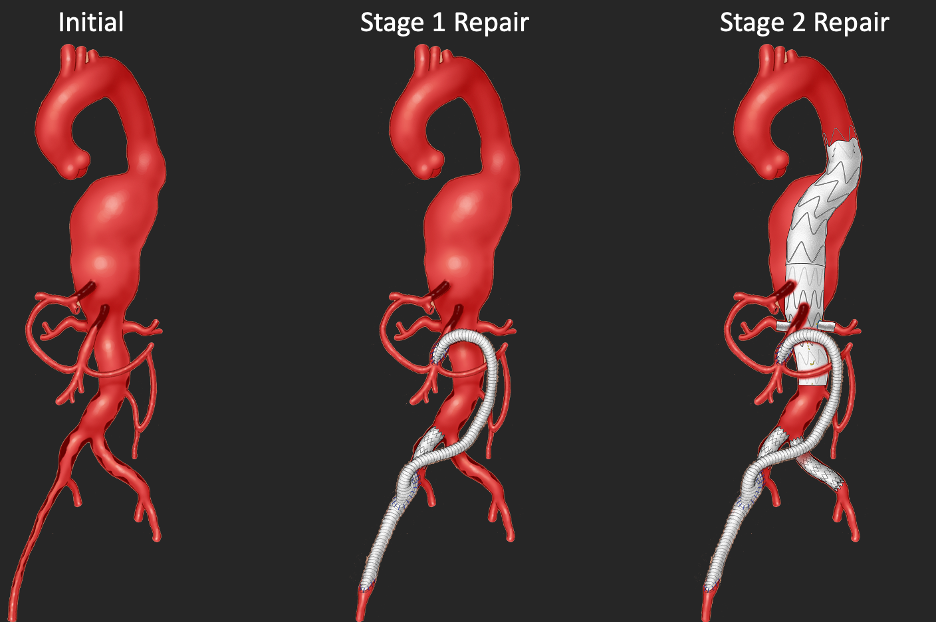Hybrid Mesenteric Bypass and Fenestrated TAAA Repair
Samuel D Leonard, Naveed D Saqib, Gustavo S Oderich
McGovern Medical School at UTHealth, Houston, TX
Objectives: We present the unique surgical treatment of a thoracoabdominal aortic aneurysm (TAAA) using hybrid mesenteric bypass fenestrated endovascular aortic repair (FEVAR). Patient is a 77-year-old female with multiple co-morbidities including COPD, current smoker, HTN, ischemic cardiomyopathy (EF<30%), and TPN dependent chronic mesenteric ischemia who presented with back pain. CTA demonstrated enlarging extent III TAAA (6 cm) with chronic celiac artery and flush superior mesenteric artery (SAMA) occlusion with periaortic thrombus. The inferior mesenteric artery (IMA) was the main collateral to the mesentery.Methods:We elected to treat via staged approach: 1st stage addressing chronic mesenteric ischemia and preparing conduit for 2nd stage treatment of the enlarging extent III TAAA via percutaneous FEVAR (Exhibit 1). Patient did well following 1st stage right iliofemoral and ilio-SMA bypass using polyester graft with subsequent decreasing TPN needs over the interval 3 months. Second stage utilized investigational device exemption patient specific fenestrated branched stent-graft (Cook Medical) with two renal fenestrations and 6m-22mm iCAST covered renal stents with proximal Alpha 30mm-30mm-160mm thoracic stent-graft. The infrarenal aorta was slightly diseased but left alone to preserve the IMA.Results: Completion cone-beam CTA demonstrated successful exclusion of extent III TAAA with small type-4 endoleak, patent renal fenestrations, IMA and retrograde SMA bypass. Postoperative day two CTA demonstrated similar findings. Patient recovered uneventfully and discharged postoperative day 4 after discontinuation of TPN. At three-month follow-up patient endorsed weight gain and resolution of pain. Currently pending additional follow-up cross-sectional imaging.Conclusions:Endovascular solutions and strategies for addressing increasing complex thoracoabdominal aortic aneurysms is becoming increasing prominent across the US; however, additional research and discussion evaluating outcomes of endovascular fenestrated TAAA repair is required before wider adoption of this unique and minimally invasive technique can be accepted. 
Back to 2023 Display Posters


